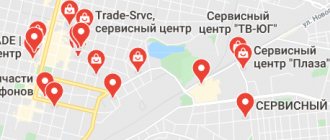Why is OKVED needed in 2020?
First, let's understand the terminology. So, OKVED (full name - All-Russian Classifier of Types of Economic Activities) is an official document designed to classify and code types of economic activities and information about them.
What is it for? Currently, OKVED is used to solve the following problems:
- Classification and coding of types of activities that are indicated when registering new individual entrepreneurs and LLCs;
- Determination of the main and additional activities of new individual entrepreneurs and LLCs;
- Coding information by type of economic activity in information systems and resources;
- Development of legal regulations regulating certain types of activities;
- State statistical observation of subjects of the national economy and social sphere;
- Preparation of statistical information for international comparisons.
What should an individual entrepreneur know when starting a construction business?
After the state registration of a private builder as an individual entrepreneur has been carried out, you need to decide how he will keep financial records.
The entrepreneur faces the following questions:
- what tax regime it will apply;
- what documentation is needed to submit to the tax office;
- what forms of accounting reporting should he maintain;
- When and how often do you need to submit financial statements?
Carrying out activities in the construction industry provides for the following taxation regimes:
- general;
- simplified;
- UTII (single tax on imputed income);
- patent.
The most common option when choosing a taxation regime for individual entrepreneurs is a simplified scheme.
This system involves filling out nine forms that will need to be submitted to the building department and the tax office.
For example, according to the general taxation system there will be 21 such forms, and the patent system consists of the cost of the purchased patent, which is the amount of tax paid to the state.
Selecting OKVED for construction in 2020: main features
Are you planning to select OKVED codes yourself? In this case, you need to keep the following in mind:
- When registering an individual entrepreneur or LLC, you must indicate at least one OKVED;
- It is not necessary to indicate additional types of activities (but, if necessary, you can indicate an unlimited number of additional OKVED codes);
- Each code must include at least 4 characters (for example, code 41.20 - Construction of residential and non-residential buildings or 43.34.1 - Painting work);
- You have the right to add or delete OKVED codes at any time - even after completing the registration procedure for an individual entrepreneur or LLC.
What to choose: individual entrepreneur or legal entity
One of the very first questions that a novice businessman faces is the choice: to register a legal entity or an individual entrepreneur?
There is a fundamental difference between conducting business on behalf of a legal entity or on behalf of an individual entrepreneur. For example, if a construction organization is represented by an LLC, all its participants have risks proportional to their shares, and each of them bears part of the responsibility. An individual entrepreneur is the only person who bears all the risks and obligations, while investing either his own or borrowed funds in business development.
There are subtleties in starting and ending a business. The responsibility of a legal entity is to open a bank account in which all current monetary transactions take place. For individual entrepreneurs, special regimes for maintaining financial statements are provided. In comparison with a legal entity, the requirements for the formation of statutory documents and initial capital for an individual entrepreneur are reduced.
The procedure for terminating a construction business also seems different. Liquidation of a legal entity will take a much longer time, since it is necessary to protect the interests of all participants in the organization. In this case, all legal relations between the parties are terminated. It is much easier to terminate the activities of an individual entrepreneur, but the closure of a private construction business does not provide grounds for getting rid of property liability.
Organizing activities in the field of repair and construction services as a legal entity provides for the possibility of reorganizing or selling the business, while an individual entrepreneur has the right only to liquidate his business.
How to choose OKVED for construction yourself? Legal advice
Especially for our readers, we have collected the most current OKVED codes for construction services in 2020:
Choosing OKVED for the construction of residential buildings in 2020
Which OKVED code should you choose for activities related to the construction of residential buildings? 41.20 as the main code - Construction of residential and non-residential buildings.
By choosing this OKVED, you will receive the right to carry out the following types of activities:
- Construction of single-family and multi-apartment residential buildings;
- Assembly and installation of prefabricated structures on the construction site;
- Reconstruction and repair of existing residential buildings;
- Preservation and reconstruction of residential buildings that are objects of cultural heritage.
Additional OKVED codes in this case may be:
- 41.10 — Development of construction projects;
- 43.12 — Preparation of the construction site;
- 43.32.3 — Carrying out work on the interior decoration of buildings.
Choosing OKVED for the construction of non-residential buildings in 2019
As in the case of the construction of residential buildings, the main OKVED code for the construction of non-residential buildings may be code 41.20 - Construction of residential and non-residential buildings.
Today this code includes the following activities:
- Construction of all types of non-residential buildings (hospitals, schools, factories, garages, hotels, shops, shopping centers, religious buildings, etc.);
- Construction and reconstruction of nuclear energy facilities (except nuclear power plants);
- Construction and reconstruction of buildings intended for carrying out nuclear and radiation hazardous work;
- Reconstruction and repair of existing non-residential buildings;
- Preservation and reconstruction of non-residential buildings that are objects of cultural heritage.
As an additional OKVED code you can specify:
- 42.22.3 — Construction of power plants;
- 42.91.2 — Construction of hydraulic structures;
- 43.11 — Dismantling and demolition of buildings;
- 43.12 — Preparation of the construction site.
Choosing OKVED for road construction in 2020
For the construction of highways, the main activity will be code 42.11 - Construction of highways and highways.
When choosing this OKVED you get the right to carry out the following types of activities:
- Construction of roads, sidewalks and pedestrian paths;
- Road marking device;
- Installation of road barriers and signal posts;
- Installation of road signs.
Possible additional codes:
- 42.13 — Construction of bridges and tunnels;
- 43.21 — Installation of street lighting and traffic lights.
Choosing OKVED for demolition of buildings in 2020
For the dismantling business, the main OKVED code will be code 43.11 - Dismantling and demolition of buildings.
Additional activities may include:
- 43.12 — Preparation of the construction site;
- 43.12.1 — Clearing the construction site.
Choosing OKVED for construction and installation work in 2020
If your business is related to construction and installation work, the main and additional OKVED codes will directly depend on the specifics of your business. For example:
- 43.21 — Electrical installation work;
- 43.22 — Production of sanitary and technical works;
- 43.22 — Installation of heating systems and air conditioning systems;
- 43.29 — Production of other construction and installation works (installation of elevators, escalators, lightning rods, air purification systems, etc.).
Choosing OKVED for finishing work in 2020
The main OKVED code for finishing work will be 43.32.3 - Carrying out work on the interior finishing of buildings.
Additional OKVED codes may include:
- 43.31 — Production of plastering works;
- 43.32 — Carpentry and carpentry works;
- 43.32.1 — Installation of doors and windows;
- 43.32.2 — Installation work on internal stairs, built-in wardrobes, built-in kitchen equipment;
- 43.33 — Work on installation of floor coverings and wall cladding;
- 43.34 — Production of painting and glass works.
Note! If you doubt that you will be able to independently select the OKVED code for construction services, you can always contact our specialists for a free consultation.
Which OKVED code to choose for business?
OKVED and activity codes often frighten novice entrepreneurs and even experienced business owners. Therefore, there is an opinion among people that only lawyers with extensive work experience, as well as tax officials, understand OKVED codes.
In fact, things are completely different! It’s very easy to understand the intricacies of OKVED codes, understand why they are needed, which OKVED codes to choose, officially register and change if necessary, just take a few minutes to read this article.
What is the “all-Russian OKVED classifier” and why is it needed?
The abbreviation OKVED stands for All-Russian Classifier of Types of Economic Activities. In a word, OKVED is a list of types of activities for entrepreneurs, where each code designates a specific type of activity, production or provision of services.
Classification of an enterprise according to OKVED is an independent phenomenon that does not depend on the form of ownership or sources of investment. Activity codes are the same for both individual enterprises and LLCs, but in each situation they will be purely individual. Let's figure out how to choose the right OKVED code for individual entrepreneurs and LLCs.
Photo banks and photo stocks are “klondikes” for photographers who want to earn passive income.
Find out from our article how to properly format a memorandum.
What OKVED codes exist?
The OKVED classifier has 17 sections, which list all types of activities that a company or individual entrepreneur can engage in. To make the classification of codes clear not only to experienced lawyers, but also to novice entrepreneurs, the codes have a special structure:
- XX - class;
- XX.X - subclass;
- XX.XX - group;
- XX.XX.X - subgroup;
- XX.XX.XX - view.
Classes, groups, subgroups, etc. are indicated by numbers separated by dots. Classes are grouped into sections with a specific letter designation.
The OKVED activity code can consist of two or more digits, the maximum number is 6, depending on the type of enterprise and the activities it carries out.
How to choose the main and additional OKVED code for an organization?
When choosing a code, you need to adhere to the principle “from general to specific.” The first step is to select the field of activity of the enterprise (for example, fishing, sales, financial activities, etc.
), after which the section is determined.
Further searches take place in the selected section, a class, subclass, group, subgroup and, finally, the final, final type of activity carried out by a specific organization are selected.
The first selected OKVED is the main one; the main requirement for it is full compliance with the main type of economic activity of the organization.
The total number of types of activities is not limited; you can use the entire classifier at once, the main thing is that at least one code is indicated in the documents.
As a rule, companies limit themselves to five or six points; experts do not recommend specifying more than 20 OKVED codes.
Russian legislation obliges entrepreneurs to indicate a code consisting of at least three digits.
However, many entrepreneurs do not want to indicate a specific type of economic activity in order to provide the company with as much freedom as possible in its actions within the selected section.
In this case, experienced company owners are limited to indicating only the subclass of the section, but, be that as it may, it is better to choose codes consisting of at least 4 digits.
Registration and amendments to OKVED codes
After all the necessary OKVED codes have been selected, you should contact the registration authority (usually the tax office) at your place of residence and submit an application for registration, in which you need to list all the selected codes.
Registration of OKVED will be carried out simultaneously with the registration of the company itself. If in the course of the organization’s work the need arises to add a new type of activity, then you will have to add a new corresponding OKVED code.
To do this, you need to draw up an application for entering OKVED codes and send it to the authority where the initial registration of the codes and the organization itself was carried out.
If an inaccuracy was made when registering codes, the error can be corrected, but in this case, a waste of time and money is inevitable (paying the state fee for registering changes in the statutory document), so it is better to immediately select the correct codes.
The fact is that the tax authority cannot make changes to applications, so every error is considered as reporting incorrect data, which entails an automatic refusal of registration.
Challenging it in court is very long, difficult and, as a rule, the court makes a decision not in favor of the entrepreneur.
Often, individual entrepreneurs need to add OKVED codes. This may be due to the expansion of activities or a complete reorientation of the business - then you will need to change all OKVED codes.
Construction codes OKVED
The group of OKVED construction codes includes general construction work, as well as work that requires special qualifications, for example, the construction of buildings and other engineering structures, the installation of these buildings, as well as finishing and finishing works.
The group includes both the construction of new buildings and their reconstruction and repair, as well as temporary construction and the construction of prefabricated structures.
Construction also includes work on performing insulation work, installation of industrial equipment, lighting and alarm systems for large objects: roads, airports, interchanges, etc.
https://www.youtube.com/watch?v=Scq_dbb1EXo
How to create an electronic wallet for an entrepreneur? What are the advantages of e-commerce?
How to calculate daily travel expenses - see the norms in our article.
Is it profitable to engage in beekeeping in Russia and Ukraine: https://bsnss.net/ideas/proizvodstvo/pchelovodstvo-kak-biznes.html
OKVED codes for online stores
When legally registering an online store, you must indicate the selected OKVED codes. Trade carried out through online stores is classified as electronic retail trade carried out through television, telephone, radio and the Internet.
The universal code for all online stores that have reopened and do not operate on the basis of an existing offline business is code 52.61.2. In addition, if you plan to deliver goods to customers, you will need to enter code 52.61 into OKVED.
1 “Retail postal (parcel) trade.”
Construction of non-residential facilities
If, however, your business is the construction of non-residential premises and structures, then the following codes will suit you:
41.20 — Construction of residential and non-residential buildings;
42.22.3 - Construction of power plants;
43.12.1 — Clearing the construction site;
42.21 — Construction of utilities for water supply and sewerage, gas supply;
42.22 — Construction of utility facilities to provide electricity and telecommunications;
43.22 - Carrying out sanitary work, installation of heating systems and air conditioning systems;
42.99- Construction of other engineering structures not included in other groups;
81.30 Landscape improvement activities.
Individual entrepreneur reporting in construction
Activities in the construction business of individual entrepreneurs require the submission of two types of reports:
- according to the chosen taxation regime. The composition depends on the selected mode. The most complete reporting is required for entrepreneurs using the main form of taxation. The simplified tax system and UTII provide for simplified accounting and filing a tax return. The patent does not provide for the filing of a declaration, but requires the maintenance of KUDiR;
- reporting to extra-budgetary funds, Pension Fund. Implies the following types of reports: on the average number of employees, reports to the Pension Fund of the Russian Federation and the Social Insurance Fund, and a report on personal income tax.
According to legislative norms, an entrepreneur is given 30 days to prepare a quarterly report and 100 for an annual report. One of the most common primary documents for entrepreneurs in this area is a contract for construction work performed by individual entrepreneurs. This agreement gives the right to deduct possible expenses from income. It is important for entrepreneurs to draw up a contract correctly in order to avoid legal and other financial costs in the future. The main distinguishing feature of such an agreement is the obligation of the customer to organize conditions for the contractor to perform the work. Acceptance of the results of work is carried out according to the act; if there are disagreements, it is also necessary to draw up a corresponding document.
Individual entrepreneurs must timely submit reports and pay tax payments. Failure to comply with these legal requirements may result in penalties.
Thus, the obligation to join an SRO has significantly improved the quality of construction services due to high requirements for members. SROs develop regularly and fruitfully. Therefore, despite the need to pay membership fees and impressive requirements for a set of documents, the participating entrepreneur receives significant benefits.











